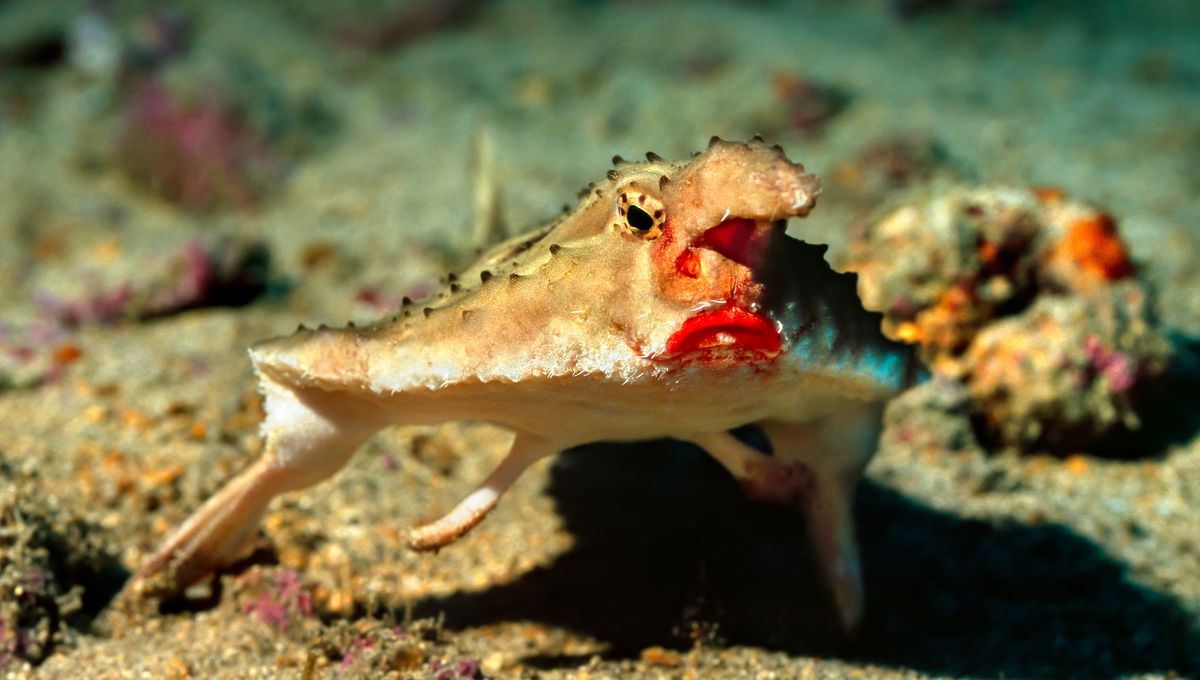
We all know the ocean is full of a whole host of weird-looking creatures, from flying buttocks and sea pigs to the plethora of strange species living in vents deep in the ocean. Now, we’re taking a close look at another ocean oddity – time to pucker up for the red-lipped batfish (Ogcocephalus darwini).
ADVERTISEMENT GO AD FREE
While the red-lipped batfish is related to 60 or so other batfish species, this one is especially unique. Found only in the waters of the Galápagos Islands, red-lipped batfish wear their permanently grumpy expressions on those bright red lips of theirs while they eat other smaller fish and crustaceans.
Nobody knows the reason why the red-lipped batfish has red lips, though some believe that it aids in the batfish being able to recognize species of the same type in the dark world at the bottom of the sea, helping to attract mates.
However, we do know how they go about getting a hold of prey. They are a member of the fish order Lophiiformes, which are more commonly known as anglerfish. Like other members of this group, the batfish has a special appendage on top of its head called an illicium, which has another structure at its top called an esca; this can emit light or excrete a liquid that can lure in prey.
As for the rest of its body, the red-lipped batfish can grow to between 25 to 40 centimeters (9.8 to 15.7 inches) and is found around 3 to 76 meters (9.8 to 249.3 feet) down under the surface of the waves – or even deeper, at around 120 meters (393.7 feet), at the edge of reefs.
Living on the bottom of the sea, the batfish doesn’t really swim but instead “walks” using modified fins along the sand. However, the batfish can swim if it chooses, using its tail to power it more speedily through the water.
Red-lipped batfish are also considered a species of Least Concern by the IUCN and have no known specific threats, although the Galapagos Conservation Trust says that “rising sea temperatures and coral bleaching could pose a threat, as it will alter their natural habitat and may cause a decline in the availability of their natural food source.”
ADVERTISEMENT GO AD FREE
And to end on a fun fact: the second part of the red-lipped batfish’s scientific name is darwini, in honor of Charles Darwin. Darwin explored the Galápagos Islands aboard HMS Beagle, eventually writing On the Origin of Species and realizing his theory of evolution.
Source Link: Pucker Up – It's Time To Meet The Red-Lipped Batfish Of The Galápagos